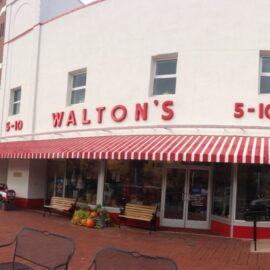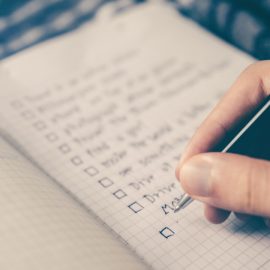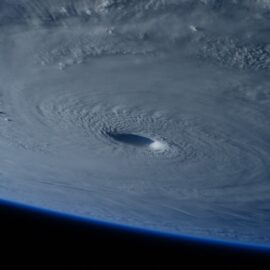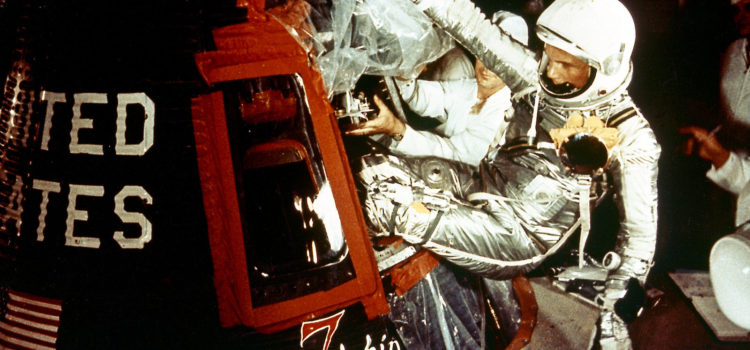
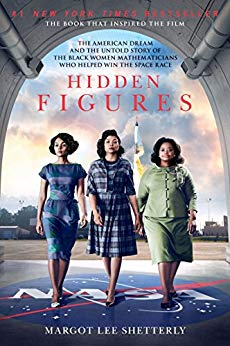
This article is an excerpt from the Shortform summary of "Hidden Figures" by Margot Lee Shetterly. Shortform has the world's best summaries of books you should be reading.
Like this article? Sign up for a free trial here .
What was the Friendship 7 mission, and what was its significance? Did the women of Hidden Figures have anything to do with the Friendship 7 launch?
Katherine Johnson was a part of the Space Task Force, which was responsible for the Friendship 7 Mission. In fact, John Glenn, Friendship 7 astronaut, personally relied on Katherine’s mathematical skills to ensure his safety. Read more about the Friendship 7 Mission and Katherine Johnson’s contributions.
The Space Task Group and the Friendship 7 Mission
Within the Space Task Group, the demands of the work became all-consuming. Staying at work until after ten o’clock at night was normal, but the engineers were laser-focused on achieving their monumental task. Still, there were enormous engineering and physics challenges to overcome in the quest to launch a man into orbit. This became known as the Friendship 7 Mission.
The first problem was designing the vessel that would carry the astronaut into orbit. It would need to be capable of withstanding the extreme heat that would be generated when the craft rocketed through the friction of the atmosphere. After rejecting earlier needle-shaped designs (which testing showed would fail to deflect the heat), the team designed what would ultimately become the Mercury space capsule—a blunt-shaped vessel, six feet wide, eleven feet long, and weighing 3,000 pounds. The problems were abundant. To launch the Friendship 7, NASA was going to be challenged.
The next hurdle was selecting an astronaut. Candidates needed to be small enough to fit inside the small cabin of the Friendship 7 capsule: only men under five feet eleven inches and under 180 pounds were to be considered. After screening candidates for the appropriate physical, age, education, and background credentials, NASA unveiled the “Mercury Seven” at a 1959 press conference. Their training facility was established at Langley, adjacent to the Space Task Group. Katherine had the opportunity to meet and rub shoulders with this elite cadre, who had suddenly become some of the most famous people in the world. In order to complete the Friendship 7 launch, they’d have to choose the best person for the job.
The team also needed to work out how to blast the man and the craft into orbit. The team of engineers with whom Katherine worked was tasked with mapping the exact trajectory of the spacecraft, from the second it lifted off the launchpad to the instant it landed back on Earth (or, more accurately, splashed down in the Atlantic Ocean). Katherine had to process the numbers generated by the proposed trajectories over and over, re-calculating the figures every time any slight detail in the flightpath was changed. The Friendship 7 launch was undoubtedly complicated by mathematical factors, and the design of the Friendship 7 capsule needed to be perfect.
There was zero room for error, as everything needed to be calibrated perfectly in order to launch the craft and return the astronaut safely. Katherine’s ballistic trajectory tables would determine whether or not the returning astronaut would land near enough to the waiting navy ships to be speedily scooped out of the sea and brought to safety. Even the slightest error would result in the craft missing its mark, putting the astronaut in mortal danger. This was made all the more complicated, as the capsule would both be launching from and landing back on a moving target: the orbiting planet Earth.
But Katherine, as ever, was undaunted by the task. She had proven herself an incomparable mathematician and a quick study with the higher-level conceptual work. She was straightforward with her bosses, telling them, “Tell me where you want the man to land, and I’ll tell you where to send him up.” She was determined to see the Friendship 7 Mission through.
Katherine authored her first research report, “Determination of Azimuth Angle at Burnout for Placing a Satellite over a Selected Earth Position” and helped shepherd it through the rigorous editorial and publication process. Its publication in September 1960 was the first from her division by a female.
John Glenn, Friendship 7 Astronaut
When astronaut Alan Shepard became the first American to travel to space in Langley’s Mercury-Redstone 1 capsule in May 1961, it was a moment of triumph for the entire team. Although the enthusiasm was somewhat tempered by the fact that Soviet cosmonaut Yuri Gagarin had successfully made it to space the month before (and had achieved orbit, which Shepard’s craft had not), it proved that the United States had the technological capability to compete in the space race. It emboldened American policymakers and was a strong boost of confidence for a nation that feared it was falling behind its Cold War rival. Shortly after this, Kennedy challenged the nation to cross another frontier. He pledged that the US would complete a successful manned mission to the Moon by the close of the 1960s. The first step was the Friendship 7 Mission.
Although they were rarely featured in the televised broadcasts of the mission control center during John Glenn’s historic journey, NASA’s black employees had made immeasurable contributions to America’s space program. They had been the ones calculating the numbers, writing reports, and sparking the nation’s dream of space travel, right alongside their white colleagues.
On February 20, at 9:47 Eastern Standard Time, with John Glenn, Friendship 7 capsule shot into orbit. After nearly four hours in flight, he returned to the bounds of Earth, with a near-perfect landing—calculated with precision by Katherine Johnson. When the navy scooped Glenn out of the waters while a jubilant nation looked on, few watching on television knew that a black female mathematician from West Virginia had mapped the journey of America’s rendezvous with destiny. With the Friendship 7, NASA was on top.
The Friendship 7 launch was a huge success for the United States. With the Friendship 7, NASA proved that it was capable of space travel. John Glenn, Friendship 7 astronaut, became a national hero. The Friendship 7 Mission was considered a success, and all who worked on it, including Katherine Johnson, felt the weight of their contributions and what they meant for the nation.

———End of Preview———
Like what you just read? Read the rest of the world's best summary of Margot Lee Shetterly's "Hidden Figures" at Shortform .
Here's what you'll find in our full Hidden Figures summary :
- How brave black women were instrumental to the American space race
- How they confronted racism and sexism to forge a better future
- Their enduring legacy in American history


